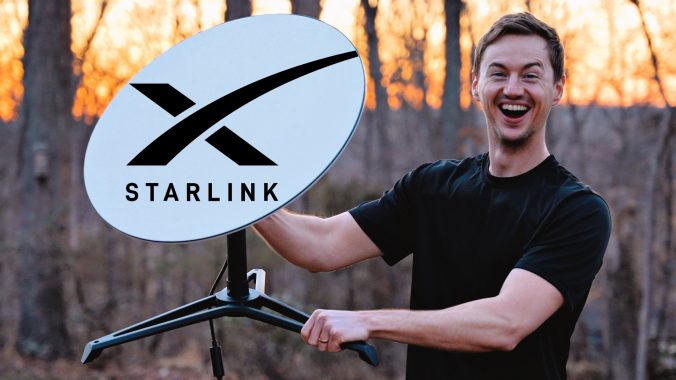SpaceX Starlink is currently a beta service that provides high-speed low-latency broadband internet to rural communities using low orbiting satellites. It’s the world’s most advanced satellite internet service. Currently there are over 1000 Starlink satellites that are delivering internet access to beta customers, and SpaceX is regularly launching more satellites into space. Their potential long term goal is to have 40,000+ Starlink satellites.
Starlink can provide much lower latency compared to other satellite internet companies. When satellites are far from Earth latency is high, resulting in poor performance for activities like video calls and online gaming. Starlink satellites are over 60x closer to Earth compared to traditional satellites, resulting in lower latency and better performance.
Currently during the beta period, Starlink customers can expect to see data speeds from 50Mb/s to 150Mb/s and latency from 20ms to 40ms in most locations. Starlink doesn’t have any data caps right now. Orders will be fulfilled on a first-come, first-served basis and anyone can input their address on Starlink.com to see if it’s available. Currently it’s available to a limited number of users per coverage area and is delivering initial beta service both domestically and internationally.
During beta, Starlink monthly internet service costs $99/month + a one time fee of $499 for the required Starlink kit which comes with everything you need to get started: wireless router, POE injector, network cables, mounting tripod, and Starlink antenna. The antenna will detect and melt snow that falls directly on it to help prevent outages and interruptions since Starlink does require a clear view of the sky to connect.
Starlink has a free mobile app that walks you through the entire setup. It also lets you use your phone camera to find the best location for the Starlink antenna. Another cool feature from the result of the Starlink antenna receiving power from the black cable is it’s not only used to melt snow but it’s also used to power the tilt motor which automatically adjusts the angle of the antenna to sync up with the nearest satellite so you don’t need to manually position the antenna angle.
Our Starlink speed test results:
1) 117 Mbps download; 20 Mbps upload
2) 27 Mbps download; 10 Mbps upload
3) 60 Mbps download; 20 Mbps upload
4) 100 Mbps download
Going from 1Mbps to over 100Mbps is seriously not just a game changer, it’s a life changer. Having immediate access to relevant information, being able to consume and create content, being able to work from home sufficiently, that’s huge for people who live in rural areas and haven’t had access to broadband internet like this. I am super impressed with the setup and performance of Starlink. This is going to make a lot of people happy, and I’m sure people will gladly pay the $500 one time fee and $100 monthly fee for it if they’ve been living with slow internet up until now.
Ordering a Tesla? Get FREE Supercharging 
Best Tesla Accessories

Geeky Tesla Shirts & Prints

My YouTube Camera Gear

How to Be Successful on YouTube

Get a Free Stock on Robinhood


YouTube 
Twitter 
Instagram 
Email squad 

